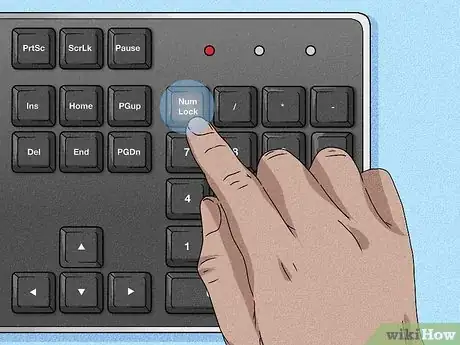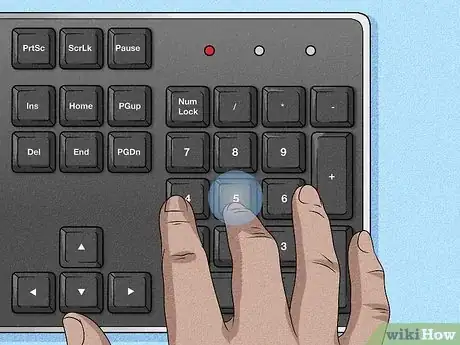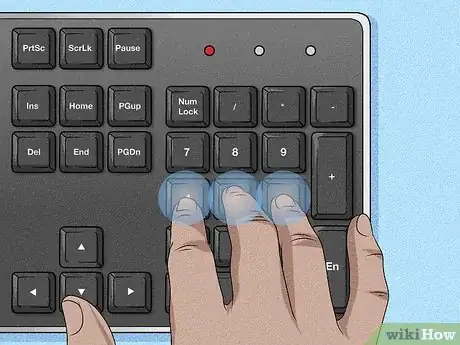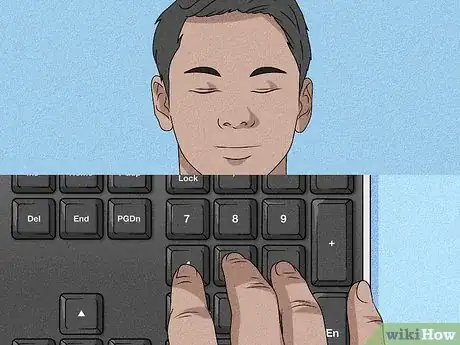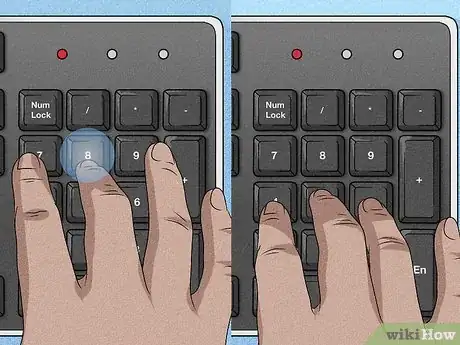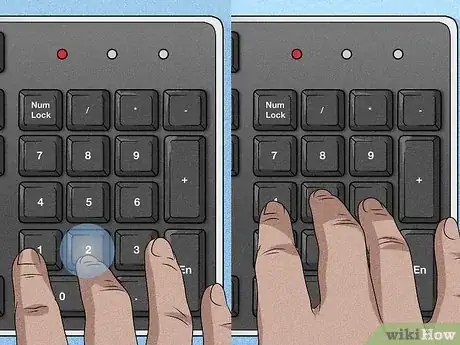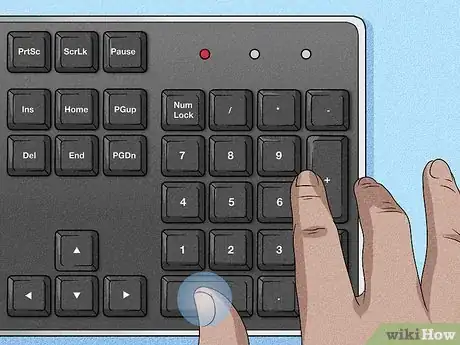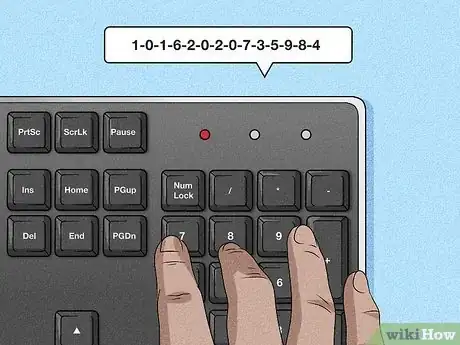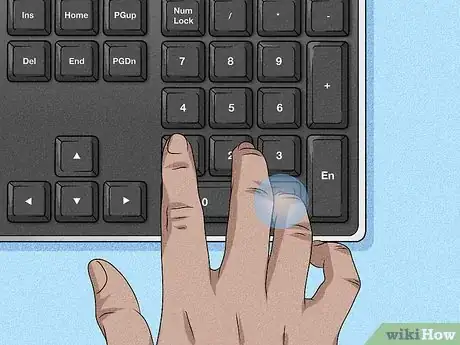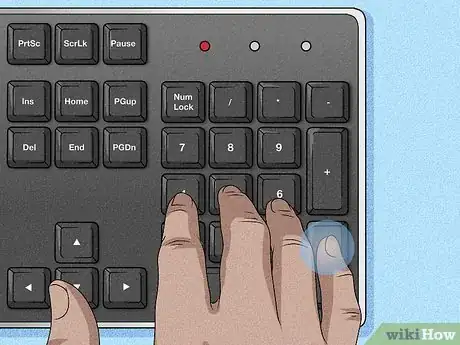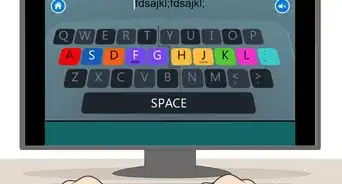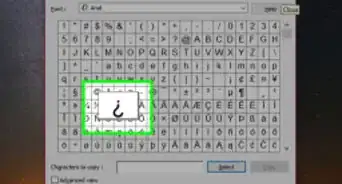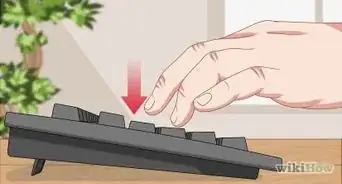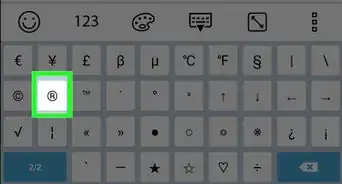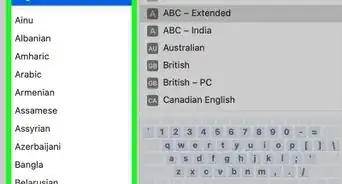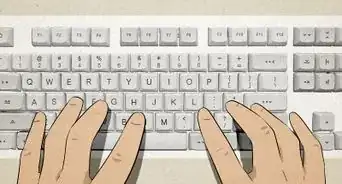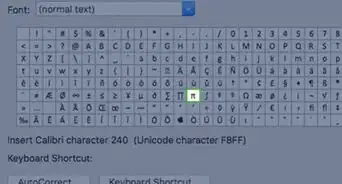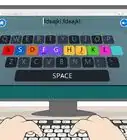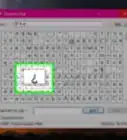X
wikiHow is a “wiki,” similar to Wikipedia, which means that many of our articles are co-written by multiple authors. To create this article, 25 people, some anonymous, worked to edit and improve it over time.
This article has been viewed 351,849 times.
Learn more...
Typing lessons typically teach the use of the numbers above the keyboard for entering numerical data. That's fine, if you're typing the occasional address, but if you have a lot of numbers to enter, you should learn to use the ten-key, typically to the right of a standard keyboard. Like touch-typing, you can learn to key in data this way without looking.
Steps
-
1Make sure number lock is on. Press the Num Lock button until the corresponding light is on.
- If the number lock is not on, pressing keys on the number pad will generally do the other thing that is written on them, typically some combination of arrow and page up/page down keys.[1]
-
2Place your middle finger on the 5 key.[2] Often, there will be a small dimple or ridge on this key so that you can easily find it by feel.Advertisement
-
3Place your index finger on the 4 (assuming a right-handed ten-key pad) and your ring finger on the 6. This is the "home row" position for ten-key work.[3]
-
4Without looking at your hand, practice typing combinations of the home row numbers, 4, 5, 6.
-
5Work in the numbers above the home row. Type the 7 with your index finger, the 8 with your middle finger, and the 9 with your ring finger. Bring your fingers back to the home row when you are done with each of these digits.
-
6Work in the numbers below the home row. Type the 1 with your index finger, the 2 with your middle finger, and the 3 with your ring finger. Return your fingers to the home row when you are done with each of these digits.
-
7Type the 0 with your thumb. This is part of the "home row" position, too.
-
8Work on combinations of all 10 digits.
-
9Learn the decimal point key and work on entering decimal data. Type the decimal point with the ring finger. Practice typing decimal numbers.
-
10Learn by feel the location of the 'enter' key, the + symbol, and the /, *, and - symbols. You will press 'enter' with your pinkie, and this completes the "home row" position. You may reach the + with either your pinkie or your ring finger, whichever is most comfortable for you. These buttons enable you to type operations directly into most calculator programs, spreadsheets, and the like.
-
11Build your speed and accuracy. As you continue to use the ten-key, you will get more fluent at it.[4]
Advertisement
Community Q&A
-
QuestionIt seems like my fingers are too short and too long! What is the easiest way to remember the keys?
 Community AnswerJust try to adjust your hand and fingers to make it easier, or try stretching exercises for it.
Community AnswerJust try to adjust your hand and fingers to make it easier, or try stretching exercises for it. -
QuestionWhen I have a space between numbers, which finger should be used for the space bar?
 Tomáš BřoušekCommunity AnswerThe other hand, left middle finger or index finger. Right hand is resting above your numerical keypad.
Tomáš BřoušekCommunity AnswerThe other hand, left middle finger or index finger. Right hand is resting above your numerical keypad. -
QuestionWhy would anyone want to do this?
 Community AnswerIt's useful for people in the business world because their fingers don't have to move as much to hit the decimal point key, the plus sign, and more.
Community AnswerIt's useful for people in the business world because their fingers don't have to move as much to hit the decimal point key, the plus sign, and more.
Advertisement
Warnings
- As with touch typing the main keyboard, use a relaxed, neutral hand position when doing ten-key work. If you have any pain or stiffness, take a break. Take steps to prevent repetitive stress injuries and carpal tunnel syndrome.⧼thumbs_response⧽
Advertisement
Things You'll Need
- Keyboard with ten-key or separate ten-key pad.
References
About This Article
Advertisement
